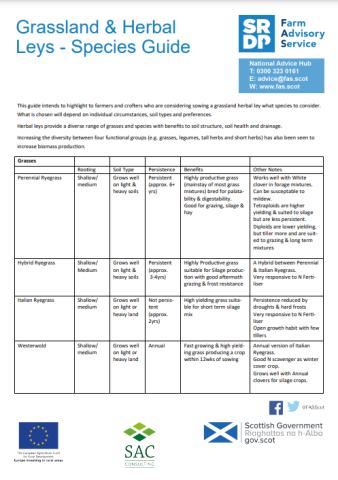What is chosen will depend on individual circumstances and soil types.
Herbal leys provide a diverse range of grasses and species with benefits to soil structure, soil health and drainage.
Increasing the diversity between four functional groups (e.g. grasses, legumes, tall herbs and short herbs) has also been seen to increase biomass production.
Download the guide below.



